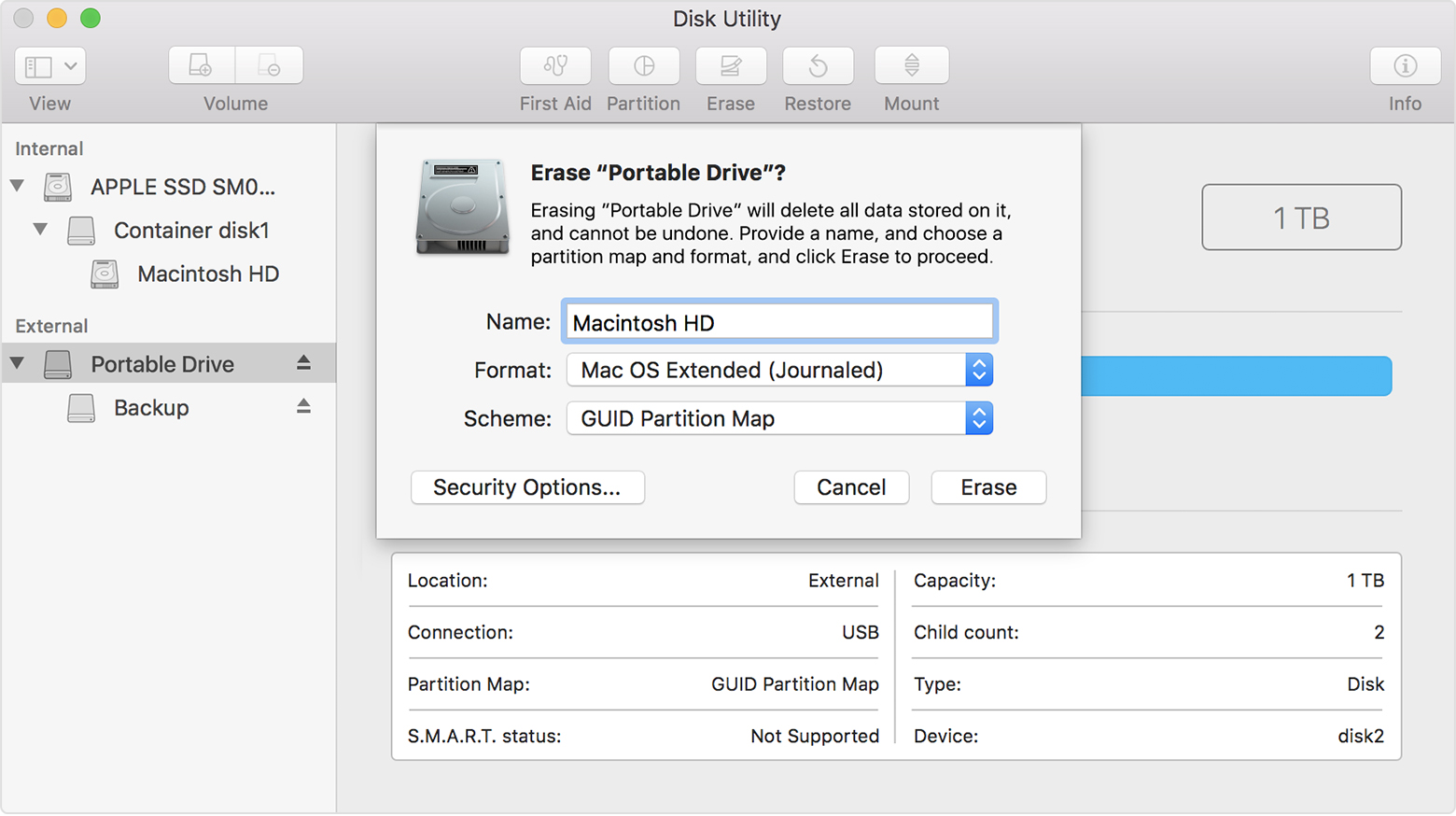Formatting Hard Drive Mac Os 9
As a disk formatting tool, Partition Resizer Free Edition also allows people to format the selected hard drive or partition into FAT32/ntfs for free. As a partition managing program, this software also help format, create, wipe, delete, resize, hide and manage partitions effectively for you. Free USB/Disk Formatter (1386). Open Disk Utility. Select your new hard drive from the sidebar. If you don’t see it, go to View Show All Devices. Click the Erase button at the top of the window.
To format an external storage device, connect it to one of the ports on your Mac. Turn the drive on, and make sure it appears in the Finder. If the drive is internal, it should already show up in. A drive can be used on any type of computer - PC or Mac. But in order for the computer and drive to communicate with one another, the drive has to be formatted with the correct file system. This article explains about file systems and provides instruction to format a drive on Windows and Mac. In the Volume Format drop-down menu, select Mac OS Extended (Journaled) if you plan to place the Mac Tiger operating system on this drive to make it a bootable drive. Select Mac OS Extended if you plan to use the drive as a media (capture scratch) drive. Install Mac OS 9 Disk Driver There is an option to Install Mac OS 9. Business Insider - If you're adding a hard drive to your computer, you probably need to format it to your computer's operating system before you can use it. This is easy to do with built-in utilities for both Windows and Mac computers, and the process is the same whether you're formatting an internal drive installed. Mac OS X version 10.11 or later. Open the Finder and go to Applications Utilities Disk Utility. In the sidebar to the left, select your LaCie d2 drive. A dialog box opens. Enter a name for the drive. This will be the name displayed when the drive mounts. For Format, select OS X Extended (Journaled). For Scheme, select GUID.
Disk Utility User Guide
Disk Utility on Mac supports several file system formats:
Apple File System (APFS): The file system used by macOS 10.13 or later.
Mac OS Extended: The file system used by macOS 10.12 or earlier.
MS-DOS (FAT) and ExFAT: File systems that are compatible with Windows.
Apple File System (APFS)
Apple File System (APFS), the default file system for Mac computers using macOS 10.13 or later, features strong encryption, space sharing, snapshots, fast directory sizing, and improved file system fundamentals. While APFS is optimized for the Flash/SSD storage used in recent Mac computers, it can also be used with older systems with traditional hard disk drives (HDD) and external, direct-attached storage. macOS 10.13 or later supports APFS for both bootable and data volumes.

Formatting Hard Drive Mac Os 9.5
APFS allocates disk space within a container (partition) on demand. When a single APFS container has multiple volumes, the container’s free space is shared and is automatically allocated to any of the individual volumes as needed. If desired, you can specify reserve and quota sizes for each volume. Each volume uses only part of the overall container, so the available space is the total size of the container, minus the size of all the volumes in the container.
Choose one of the following APFS formats for Mac computers using macOS 10.13 or later.
APFS: Uses the APFS format. Choose this option if you don’t need an encrypted or case-sensitive format.
APFS (Encrypted): Uses the APFS format and encrypts the volume.
APFS (Case-sensitive): Uses the APFS format and is case-sensitive to file and folder names. For example, folders named “Homework” and “HOMEWORK” are two different folders.
APFS (Case-sensitive, Encrypted): Uses the APFS format, is case-sensitive to file and folder names, and encrypts the volume. For example, folders named “Homework” and “HOMEWORK” are two different folders.
You can easily add or delete volumes in APFS containers. Each volume within an APFS container can have its own APFS format—APFS, APFS (Encrypted), APFS (Case-sensitive), or APFS (Case-sensitive, Encrypted).

Mac OS Extended
Choose one of the following Mac OS Extended file system formats for compatibility with Mac computers using macOS 10.12 or earlier.
Mac OS Extended (Journaled): Uses the Mac format (Journaled HFS Plus) to protect the integrity of the hierarchical file system. Choose this option if you don’t need an encrypted or case-sensitive format.
Mac OS Extended (Journaled, Encrypted): Uses the Mac format, requires a password, and encrypts the partition.
Mac OS Extended (Case-sensitive, Journaled): Uses the Mac format and is case-sensitive to folder names. For example, folders named “Homework” and “HOMEWORK” are two different folders.
/convert-psx-iso-to-ps3-pkg-games.html. Mac OS Extended (Case-sensitive, Journaled, Encrypted): Uses the Mac format, is case-sensitive to folder names, requires a password, and encrypts the partition.
Windows-compatible formats
Formatting Hard Drive Mac Os 9.2
Choose one of the following Windows-compatible file system formats if you are formatting a disk to use with Windows.
Formatting Hard Drive Mac Os 9.0
MS-DOS (FAT): Use for Windows volumes that are 32 GB or less.
ExFAT: Use for Windows volumes that are over 32 GB.